Birthstone Report: Sapphires - A Royal History
As many Stylebook readers already know from last year's September birthstone report, sapphires are the birthstone for this month and they're a fantastic option for many reasons, most especially durability and color variation. I love sapphires, so for this month's report I have assembled some royal history so you can see just how gorgeous this gemstone can be...
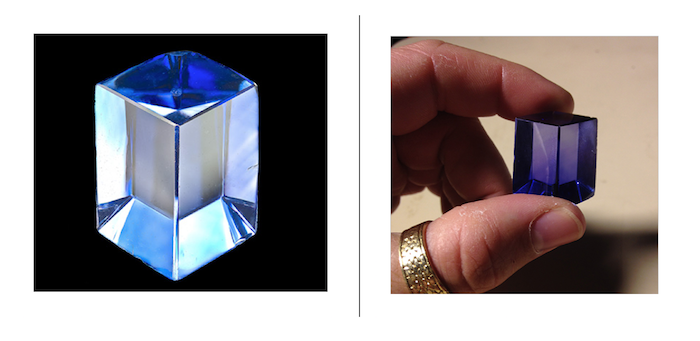 The 135.74ct Grand Sapphire, shown illuminated and in-hand
The 135.74ct Grand Sapphire, shown illuminated and in-hand
The Grand Sapphire
Acquired for the French crown jewels during the 72-year reign of Louis XIV (1643-1715), the Grand Sapphire weighs in at 135.74ct and features an intriguingly simple faceting style that allows the viewer to easily see the nearly perfect clarity and color gradation of the gemstone. The stone is likely from Ceylon (present-day Sri Lanka) and was given to Louis XIV around 1669 and set in gold, though there is no evidence that Louis XIV ever wore The Grand Sapphire as part of his regalia. Instead, the sapphire was placed in a fantastic gold chest that was exhibited to impress visitors.
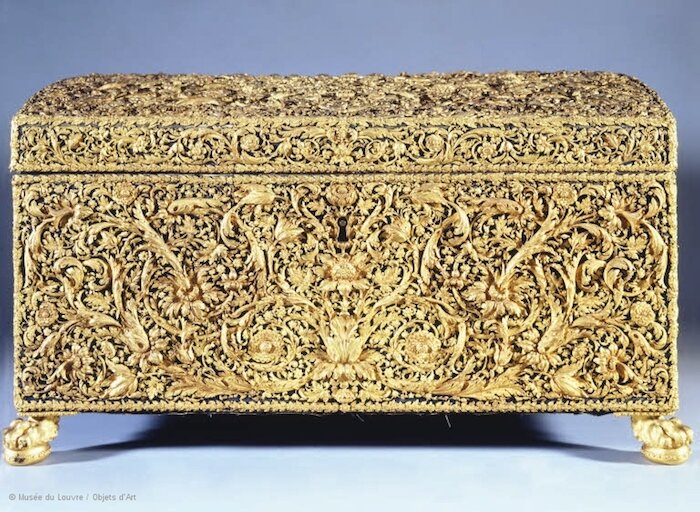 King Louis XIV's famous gold chest, currently housed at Le Louvre
King Louis XIV's famous gold chest, currently housed at Le Louvre
The gemstone was kept with all the other jewels of the French Crown in the Garde-Meuble (the royal storehouse), which is now the Hotel de la Larine on Place de la Concorde in Paris. After the chaos of the French Revolution during which many of the crown jewels were looted or their histories lost to archives, the sapphire was donated to the National Museum of Natural History for the purpose of "public education", where it remains today.
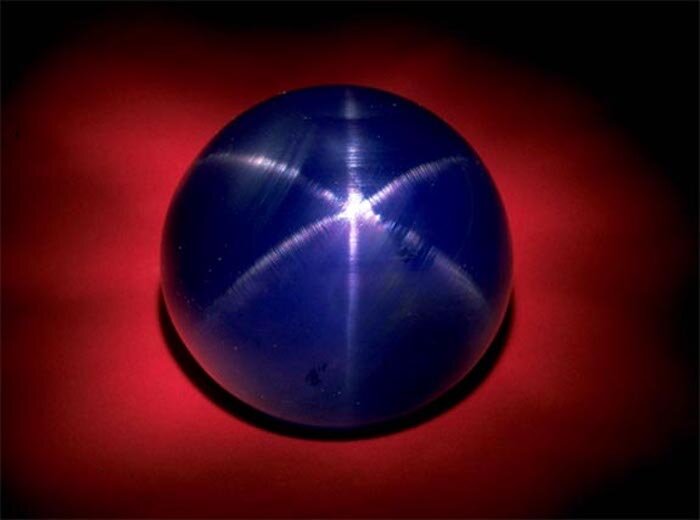 The 330-carat Star of Asia, currently on display at the Smithsonian Museum of Natural History
The 330-carat Star of Asia, currently on display at the Smithsonian Museum of Natural History
The Star of Asia
Housed in the Smithsonian Museum of Natural History, this 330-carat star sapphire is truly stunning both for its astounding size as well as for its nearly perfect asterism present in the gemstone. Many people are unfamiliar with star sapphires but they are a gorgeous alternative to a traditional faceted gemstone. As you would expect, its name refers to the "asterism" (derived from the Latin word "astrum" for star) of light that reflects to the eye. Such stars are not present in all sapphires; rather, they form when titanium atoms are trapped within the growing corundum cystal. As the crystal cools, the titanium forms needlelike crystals of the mineral rutile, which orient themselves in three directions. When properly cut, light reflecting off the three sets of needles produces the six-rayed star. The Star of Asia was originally mined in the historic Mogok mines of Burma (now Myanmar) and once belonged to India's Maharajah of Jodhpur.
PS - While you're visiting The Star of Asia at the Smithsonian Museum of Natural History, you can also check out The Hope Diamond, the stunning blue diamond which also belonged to Louis XIV and is otherwise known as Le Bijou du Roi, Le bleu de France, and the Tavernier Blue. Le Bijou du Roi was purchased by Louis XIV around the same time as The Grand Sapphire. The diamond gets its blue hue from the presence of boron atoms in the mineral.
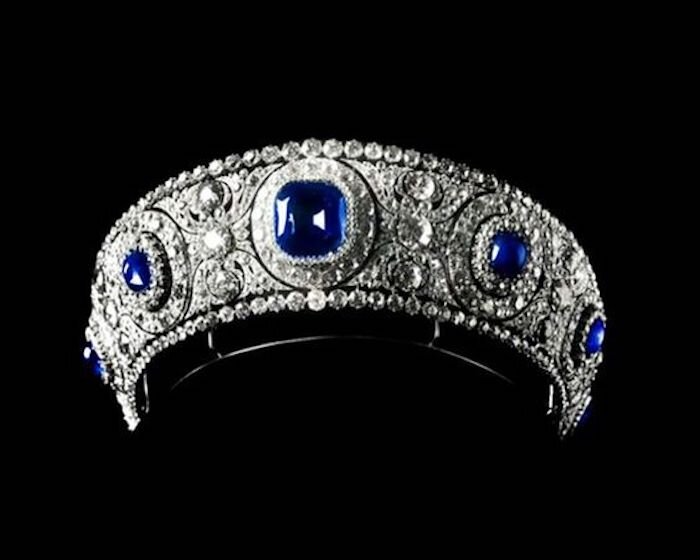 The Ruspoli Sapphire as set in the Russian Kokoshnik designed by Cartier for Grand Duchess Maria Pavlova
The Ruspoli Sapphire as set in the Russian Kokoshnik designed by Cartier for Grand Duchess Maria Pavlova
The Ruspoli Sapphire
The Grand Sapphire is often confused with another stunningly large sapphire from this time period known as The Ruspoli Sapphire. The gemstones have approximately the same weight but their faceting is quite different, with The Ruspoli Sapphire demonstrating a more conventional cushion cut. Unlike The Grand Sapphire which has spent most of its history in a museum, The Ruspoli Sapphire has ventured far from France and its value has paid for the safe passage of multiple royals during the upheaval of the Russian Revolution and World War II.
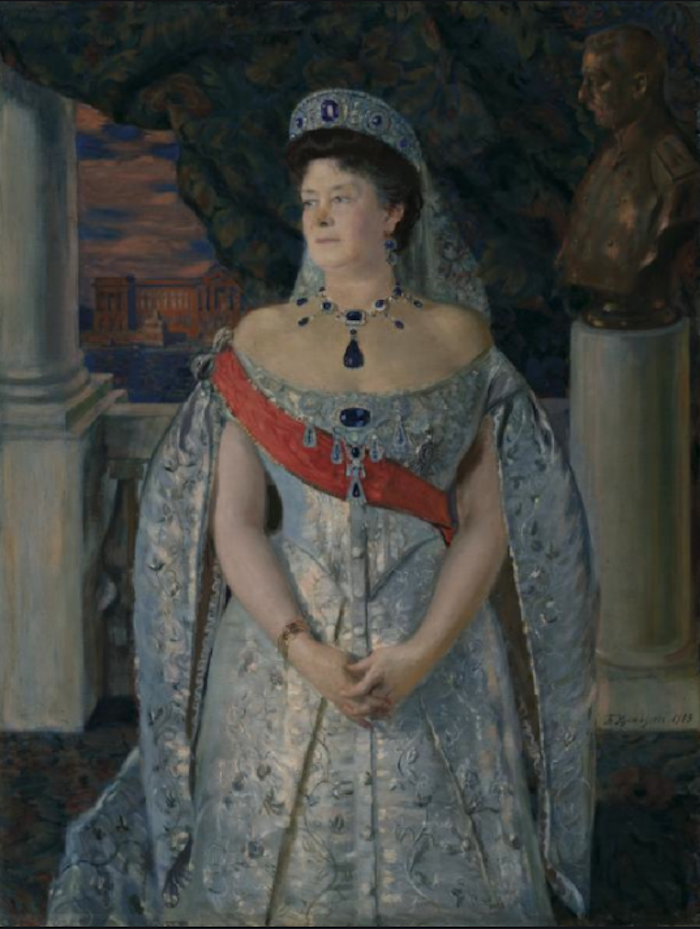 Grand Duchess Maria Pavlova wearing the 1909 Cartier kokoshnik
Grand Duchess Maria Pavlova wearing the 1909 Cartier kokoshnik
The Ruspoli Sapphire was first acquired by the Grand Duchess Maria Pavlova of Russia. The Grand Duchess commissioned Cartier to set the sapphire in a great Russian kokoshnik flanked by other cabachon-cut sapphire Romanov heirlooms which had originally belonged to Tsarina Alexandra Feodorovna, the wife of Tsar Nicholas I. Upon the upheaval of the Russian Revolution, Grand Duchess Maria Pavlova sold the diadem to her niece, Queen Marie of Romania, and used the funds from the sale to pay for her safe passage out of Russia. A wise move, considering the fate of her fellow Romanov family members.
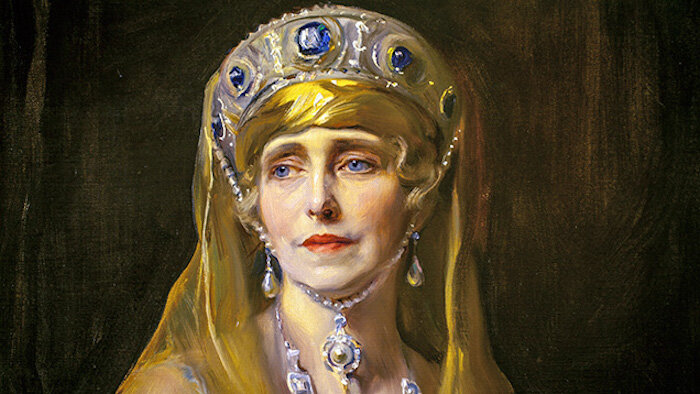 Portrait by Philip Alexius de Laszlo, Queen Marie of Romania wearing the 1909 Cartier kokoshnik
Portrait by Philip Alexius de Laszlo, Queen Marie of Romania wearing the 1909 Cartier kokoshnik
Queen Marie of Romania used the kokoshnik as the cornerstone of her jewelry collection and she chose to wear the tiara when she was painted by Philip de László in 1924. She passed the kokoshnik on to her daughter, Princess Ileana, when she married an Austrian archduke in 1931. A few short years later, upon the termination of World War II, the monarchy in Romania disintegrated like many other royal lineages at the time. The young King Michael I was forced to abdicate in 1947, and the royal family went into exile. Ileana ended up in the United States, and initially, she took the sapphire tiara with her. The princess’s autobiography includes fascinating descriptions of the tiara and her journey with it from country to country. Ultimately, though, she also decided to part with the piece. In the early 1950s, she sold the tiara back to its original maker, Cartier. She used the funds she received to put a down payment on a new home and to pay the travel costs that enabled her to bring her children to America. The current whereabouts of the Ruspoli Sapphire are unknown (!!) One of my favorite parts of my job is digging into the rabbit holes of history and learning about the gemological lore that shapes our understanding of jewelry today. Make sure you stop by our shop to check out our own featured gorgeous sapphire and diamond ring, or work with us to pick out a sapphire of your own. We can't wait to see what you design.

